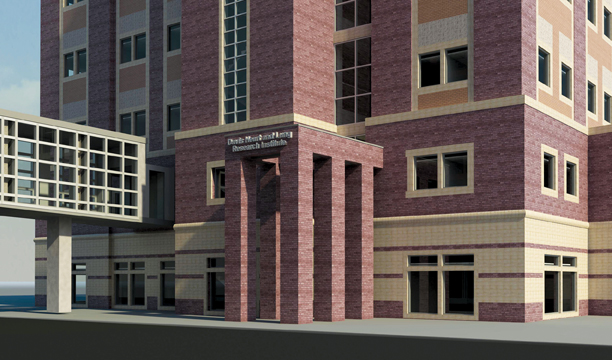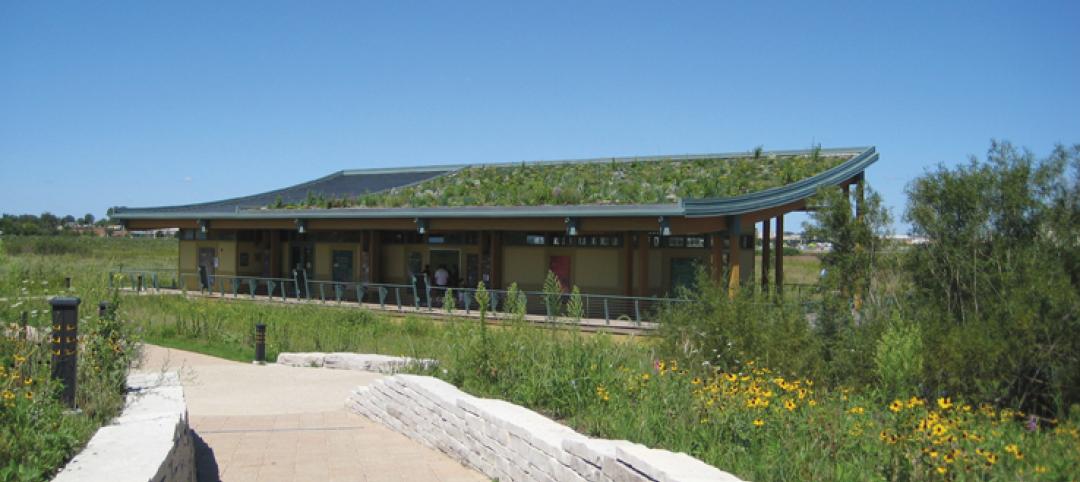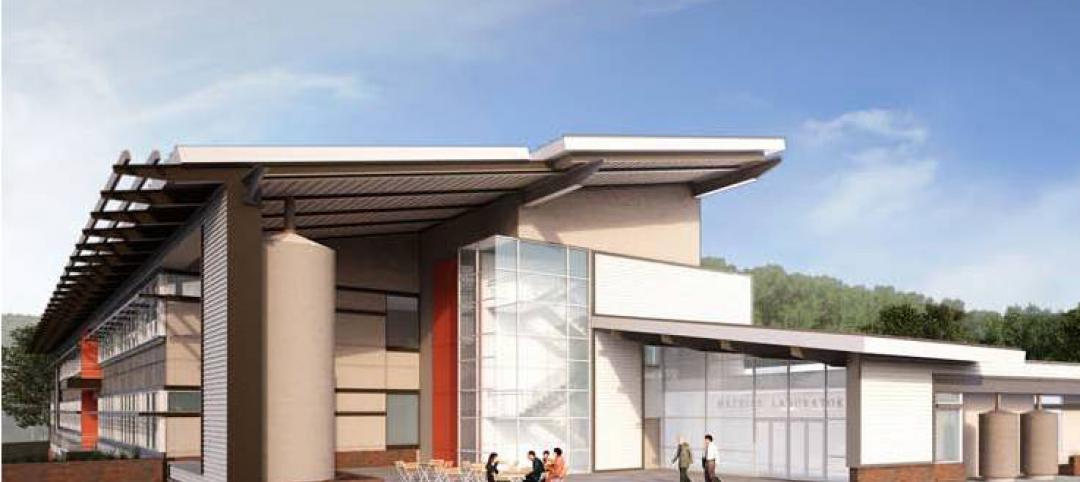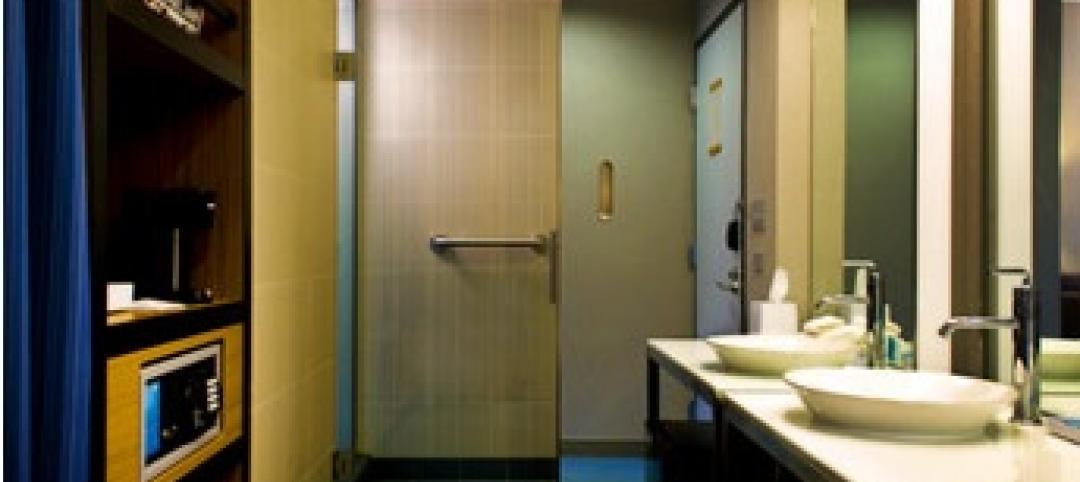While increasing numbers of building projects are now being designed with building information modeling, very few property owners are retroactively applying BIM to their existing buildings.
But that may slowly start to change as a noteworthy initiative on the part of Ohio State University Medical Center to fully convert its 55 Medical Center buildings from AutoCAD to BIM gains attention.
With a deadline set for late summer, the Medical Center is well on the way to its ultimate goal to improve its quality and speed of decision making as it relates to facility use, renovations, maintenance, wayfinding, and energy use. However, the Medical Center has already begun benefitting from their newly converted models.
“We started using the BIM models much quicker than we expected,” said Joe Porostosky, the Medical Center’s manager of facilities information and technology services. “For example, we’re currently renovating our emergency room, and we were able to produce very high-quality renderings and a video walkthrough to show senior leaders some different design possibilities.”
In another instance, the hospital had to decide where to construct a new donor sign. Because the exterior of that particular building had already been modeled, the BIM team could easily present several rendered options of where the sign could be placed. “Our staff was just amazed at how quickly we could move the sign around and show them what that space would look like,” said Porostosky.
INCUBATING THE BIM CONCEPT
The seeds for the BIM conversion idea were first planted in 2008, when Porostosky decided to take a closer look at how the Medical Center was managing its floor plans and what kinds of technology were available. Realizing that Ohio State had access to a lot of Autodesk software at a discounted rate, Porostosky began mulling over the idea of using BIM.
Then, in 2010, he met Brian Skripac, the BIM director at Columbus-based architecture firm DesignGroup, and the two began to formulate a plan. Porostosky also consulted with Western Michigan University for advice, as that institution was going through a similar conversion project, although at a smaller scale.
Once the funding was pulled together and an official process was mapped out, the project officially kicked off in the spring of 2011. Five students were trained in Revit and began the conversion of the AutoCAD drawings, covering 5.7 million sf of building property.
In addition to tracing the original drawings, the conversion team is incorporating an additional level of detail into the Revit models, including exteriors, roofs, and window placement, height and volume, ceilings and floors, and GIS location data.
The emerging BIM models are chalking up some interesting possibilities. For instance, with energy modeling and building performance capabilities, the Medical Center will be able to decided more effectively where and how to upgrade different buildings on a limited budget while complying with the university’s requirement that all renovations attempt to achieve at least LEED Silver.
“The energy analysis aspect of this project is something that’s pretty exciting and is really one of the most important aspects of the project,” says Skripac.
As for operations, the Medical Center is looking at ways in which it can use the BIM models to set up maintenance schedules for items like carpet, tile, and finishes. The team would also like to take equipment-heavy spaces and laser scan the machinery to build into the model so that the engineers know exactly what the mechanical room looks like and can more easily expand the systems as needed.
“The more we get into it, the more we’re finding other values: Now that we have all this data, what can we do with it? For example, how can we improve our wayfinding using BIM?” asked Porostosky. With 34% of the Medical Center’s 1.8 million annual visitors requiring wayfinding help, Porostosky envisions his team can eventually using the Revit models to create video renderings, analyze hallway widths, and identify congestion points.
UNLOCKING THE POTENTIAL OF BIM
Porostosky sees BIM’s huge potential application in the realm of ongoing building operations. Once the Medical Center completes its conversion to BIM, he believes there may even be the opportunity to roll it out across Ohio State’s portfolio of more than 750 buildings.
Skripac sees the higher education and healthcare markets as the most ideal candidates for BIM conversions due to their longer life cycles and the constant space use changes that occur within them. He points out that “often reimbursement opportunities and grant research funding are tied into having up-to-date tracking information and data in terms of how the spaces are specifically being used, and BIM is a great way to accomplish that.” BD+C
Related Stories
| May 25, 2011
Low Impact Development: Managing Stormwater Runoff
Earn 1.0 AIA/CES HSW/SD learning units by studying this article and successfully passing the online exam.
| May 25, 2011
Register today for BD+C’s June 8th webinar on restoration and reconstruction projects
Based on new and award-winning building projects, this webinar presents our “expert faculty” to examine the key issues affecting project owners, designers and contractors in case studies ranging from gut renovations and adaptive reuses to restorations and retrofits.
| May 25, 2011
Hotel offers water beds on a grand scale
A semi-submerged resort hotel is the newest project from Giancarlo Zema, a Rome-based architect known for his organic maritime designs. The hotel spans one kilometer and has both land and sea portions.
| May 25, 2011
Smithsonian building $45 million green lab
Thanks to a $45 million federal appropriation to the Smithsonian Institution, the Smithsonian Environmental Research Center in Edgewater, Md., has broken ground on what is expected to be one of the most energy-efficient laboratories in the country. The 69,000-sf lab is targeting LEED Gold and is expected to use 37% less energy and emit 37% less carbon dioxide than a similar building.
| May 25, 2011
World’s tallest building now available in smaller size
Emaar Properties teamed up with LEGO to create a miniature version of the Burj Khalifa as part of the LEGO Architecture series. Currently, the LEGO Burj Khalifa is available only in Dubai, but come June 1, 2011, it will be available worldwide.
| May 25, 2011
Developers push Manhattan office construction
Manhattan developers are planning the city's biggest decade of office construction since the 1980s, betting on rising demand for modern space even with tenants unsigned and the availability of financing more limited. More than 25 million sf of projects are under construction or may be built in the next nine years.
| May 25, 2011
Olympic site spurs green building movement in UK
London's environmentally friendly 2012 Olympic venues are fuelling a green building movement in Britain.
| May 25, 2011
TOTO tests universal design at the AIA conference
If you could be 80 years old for 30 minutes—and have to readjust everything you think you know about your own mobility—would you do it?
| May 20, 2011
Hotels taking bath out of the bathroom
Bathtubs are disappearing from many hotels across the country as chains use the freed-up space to install ever more luxurious showers, according to a recent USAToday report. Of course, we reported on this move--and 6 other hospitality trends--back in 2006 in our special report "The Inn Things: Seven Radical New Trends in Hotel Design."
















